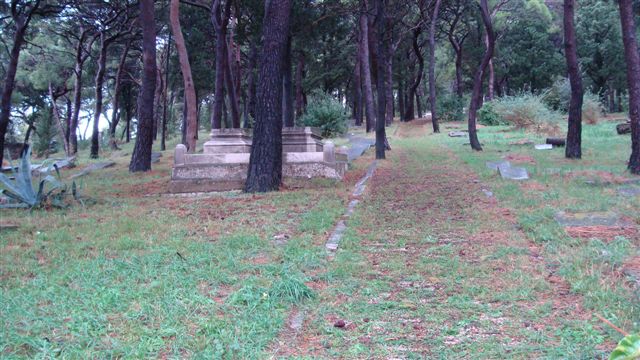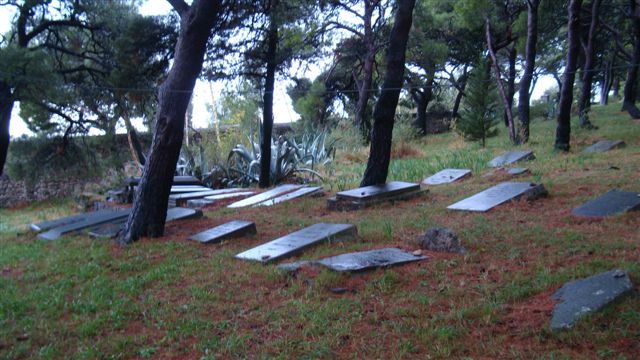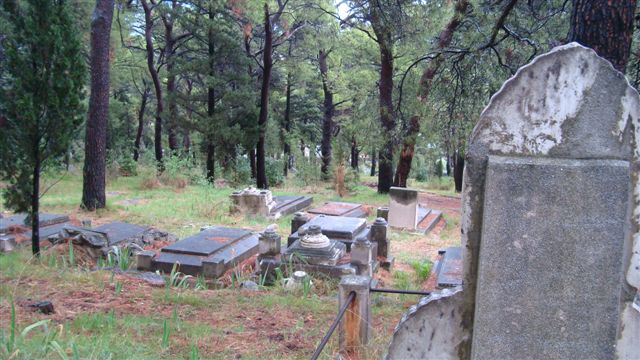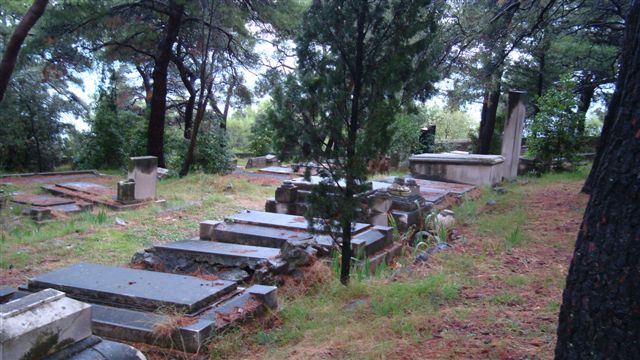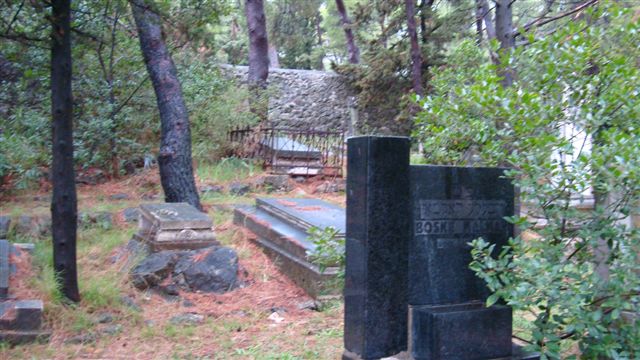Alternate names: Split [Croa], Spalato [Ital], Spalatum [Lat], Aspalathos [Grk]. 43°31' N, 16°27' E, in S Croatia, on the Adriatic sea. Largest city in Dalmatia.
Jewish community [January 2010]
- Encyclopedia of Jewish Life (2001), p. 1228: "Split".
- Pinkas HaKehilot, Yugoslavia (1988), p. 246: "Split"
-
Jewish Communtiy Split
Zidovski prolaz 1
21000 Split
tel/fax : 021/345-672
President : Zoran Morpurgo
e-mail :This email address is being protected from spambots. You need JavaScript enabled to view it.
City of Split
Sephardic Jewish History of Split, Pre-Sephardic and Modern History [February 2009]
Jewish Guide to Croatia [July 2014]
Jews lived near Split in Salona in ancient Roman times. Salona (now a suburb of Split called Solin), capital of the Roman province of Dalmatia and one of the most important Roman commercial seaports on the Adriatic, has archeological evidence of a well established Jewish community in the second and third centuries C.E. including a pendant, ceramic oil lamps decorated with menorahs, a fragment of a Jewish sarcophagus marked with a menorah, and the tombstone of a Syrian Jew named Malhos. Destroyed by Avar invaders in the early seventh century, Jews from Salona presumably sought refuge in the neighboring palace of Diocletian and formed the core of the Jewish community of Split. Remaining there, they developed the Jewish Community of Split. Existence of that Jewish community n the mid-14th century is confirmed in Episcopal church records that mention a "great synagogue" within the walls of the palace. The Jewish community swelled with the arrival of exiles from Spain and Portugal in the late 15th to early 16th centuries. Today about 100 Jews live there. The existing synagogue located on Zidovski prolaz (Jewish passage), a narrow alley in the cramped old Jewish quarter still known as the ghetto and believed to date from about 1500, was part of a residential building in the palace's NW corner. Renovated many times before, Italian fascists sacked the tiny sanctuary in 1942 and destroyed most of the ritual objects and archives in a public bonfire in the main square. Restored after the war, the small room was renovated and ceremonially reopened in September 1996. Archaeologists discovered carvings of menorahs dating from the 12th century. [February 2009]
Jewish Population: 1925/26-210; 1931- 292; 1937/38-200; 1941-415; 1947-175; 1994-130." See Gruber, Ruth Ellen. Jewish Heritage Travel: A Guide to East-Central Europe. New York: John Wiley & Sons, Inc, 1992. (Pages 242-243)
Split Archaeological Museum [July 2014]
The synagogue is in a residential building (Zidovki Prilaz 1) in the NW corner of the former palace. "In 1942 Italian fascists ravaged the tiny sanctuary, throwing most of the ritual objects, archives, Torah scrolls, and books onto a bonfire in the main town square. The synagogue was restored after World War II and again renovated and reopened in 1996. It now shares a building with the Jewish community headquarters. The sanctuary is in a rectangular room with arched windows. The stone Ark is flanked by columns set under a decorative arch." Source [July 2014]
CEMETERY:
- LOVRINAC MUNICIPAL CEMETERY, Jewish Section:
- A Holocaust memorial is in the new Jewish cemetery. BOOK: Ziovsko groblje u Splitu (The Jewish cemetery in Split); Dusko Keckemet, Zusja Efron ; prijevod 2. poglavlja sahebrejskog Rahela Loker ; engleski prijevod rezimea Mirko Bruner. Published: Split : b Zidovska opcina, 1973. Summary in English. List of illustrations also in English. Includes bibliographical references. Other titles: Jewish cemetery in Split. DR396.S657 Z535 at the Leo Baeck Institute: ID # GT 3271 Y8 K4.
- OLD CEMETERY:
- By report, the cemetery dates from 1800. Almost completely abandoned, the tombstone names and dates are still readable. Located at the highest point in Split where the Beit Hateharah (Purification House) existed, a restaurant's pub gives access to the cemetery. Source: Marlei Bello: e-mail: This email address is being protected from spambots. You need JavaScript enabled to view it. [date?]
- The oldest remaining gravestone, horizontal Sephardi type; some are shaped like a sarcophagus roof, and the others are flat, slightly inclined slabs, date from 1717 and have Hebrew inscription plus Croatian or Italian. The rectangular plot used until WWII includes about 700 tombstones from the 18th to 20th centurie. A gated wall surrounds the site.. The entrance is beside a house that once was a mikveh and is now a café.
- [UPDATE] "I passed the cemetery in 2001 and noted that the Ceremonial Hall [former mikvah] appears to be a cafe. At least, the cafe building has Hebrew words in the stone of the building." Source: Richard C. Sadove, M.D. [30 August 2001]
- The Jewish cemetery was established in 1578. Source: The Jewish Travel Guide.London: Jewish Chronicle, 1992. [1999]
- Old Jewish cemetery [July 2014]
- Site on the eastern slope of Mt. Marjan above the town was obtained in 1573 after Jews fleeing Spain and Portugal found refuge in Split. The earliest extant tombstone dates from 1717. The cemetery was active until World War II. On a picturesque forested slope above the city and surrounded with a wall and gate, the cemetery is designated a cultural monument, but maintenance is not good. Site is partly overgrown with visible traces of vandalism. The cemetery chapel is now used as a coffee house. The some 700 tombstones are two types of stones, both horizontal in the Sephardic fashion: a sarcophagus roof and flat slab with elaborate Hebrew calligraphic inscriptions. Modern tombs have additional Italian or Croatian inscriptions in but there but no elaborate graphic or figurative decoration. Two 17th century tombstones brought to Split do have figurative decorations; the one from Jelsa on Hvar island has a dove with an olive branch and the one from Bol on Brac island an angel climbing a ladder to the sky with the inscription "This friend has mounted/Into angelic heights/To take a rest in the garden of Eden/In the Grove of Salvation." [Source: Efron, Zusja and Dusko Keckemet. Zidovsko Groblje u Splitu 1573-1973. (Split: Jewish Community of Split), 1973, 24.] [February 2009]
- "Established in 1575, the cemetery exists with a Ceremonial Hall and 200 monuments as the property of the Jewish Community of Split. The cemetery is a historical landmark and protected. Jewish Community established in 16th century still exists. Source: Srdjan Matic, MD, 40 West 95th Street, Apt. 1-B, New York, NY 10025. (212) 222-7783.
- April 27, 2014 by B. Ilic: (JTA) - Vandals seriously damaged several graves in a more than 400-year-old Jewish cemetery in Split, Croatia. According to Ana Lebl, the president of the Jewish community in Split, unknown persons forced open three graves and also damaged their headstones and fences. In addition, they knocked over and broke a fourth headstone and damaged other. Historic Jewish cemetery in Croatia vandalized [July 2014]
Photos courtesy This email address is being protected from spambots. You need JavaScript enabled to view it.

